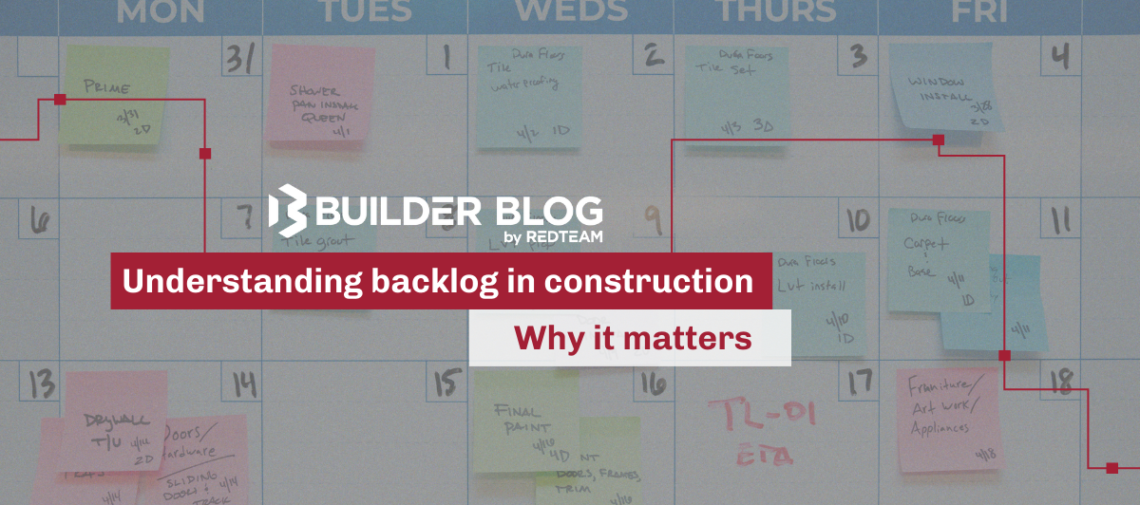
Understanding Backlog in Construction: What It Is and Why It Matters
In the fast-paced world of construction, staying on top of projects, finances, and forecasts is critical for long-term success. One of the key indicators that construction companies use to measure future business stability and growth potential is backlog.
What is construction backlog?
In simple terms, backlog refers to the value of work—measured in dollars—that a construction company has contracted but not yet completed. Think of it as a forward-looking financial snapshot. It includes all the projects a company has signed contracts for, but that are either partially completed or haven’t yet started.
Backlog can include:
- New projects scheduled to begin soon
- Ongoing work that is still in progress
- Approved change orders not yet performed
For example, if a contractor signs a $5 million contract and has completed $2 million worth of work, the remaining $3 million is considered part of their backlog.
Why is backlog important?
Backlog is more than just a number—it’s a window into the future health of a construction business. Here’s why it matters:
1. Predictable Revenue Stream
Backlog provides a forecast of future revenue. It helps companies estimate how much work they have lined up and what income can be expected over the coming months or years.
2. Strategic Planning
With clear visibility into backlog, companies can plan their workforce, equipment, and resource allocation more effectively. It informs decisions about hiring, cash flow management, and when to pursue new bids.
3. Business Valuation and Creditworthiness
Financial institutions, investors, and bonding companies often look at backlog to gauge the financial strength and future viability of a construction firm. A healthy backlog signals strong demand and stability.
4. Growth Indicator
Tracking how backlog grows (or shrinks) over time can help company leaders assess market trends and internal performance. An increasing backlog may indicate strong sales and marketing efforts or an uptick in industry demand.
Backlog vs. Pipeline
It’s important to distinguish backlog from the sales pipeline. While backlog refers to contracted work, the sales pipeline includes potential projects that are still in the proposal or bidding stage. A strong sales pipeline is necessary to maintain a healthy backlog.
How to manage and monitor backlog
Staying on top of backlog requires accurate project tracking and reporting. Many construction firms use project management or construction ERP software to:
- Track contract values and project progress
Forecast revenue recognition - Identify capacity gaps
Regular backlog reviews—monthly or quarterly—allow companies to catch warning signs early, such as a shrinking backlog or overextension.
In construction, backlog is a vital metric that tells the story of where your company is headed. It’s not just about the contracts you’ve won—it’s about how effectively you manage and deliver on them. By understanding and monitoring backlog, construction leaders can make smarter decisions, ensure sustainable growth and stay competitive in a demanding industry. That’s where RedTeam comes in. Whether you’re using RedTeam Flex or RedTeam Go, our construction management solutions give you real-time visibility into project progress, financials, and backlog reporting. RedTeam has tools to manage everything from preconstruction to closeout. This helps contractors stay on time, work together across teams, and be sure of their pipeline and future workload.



